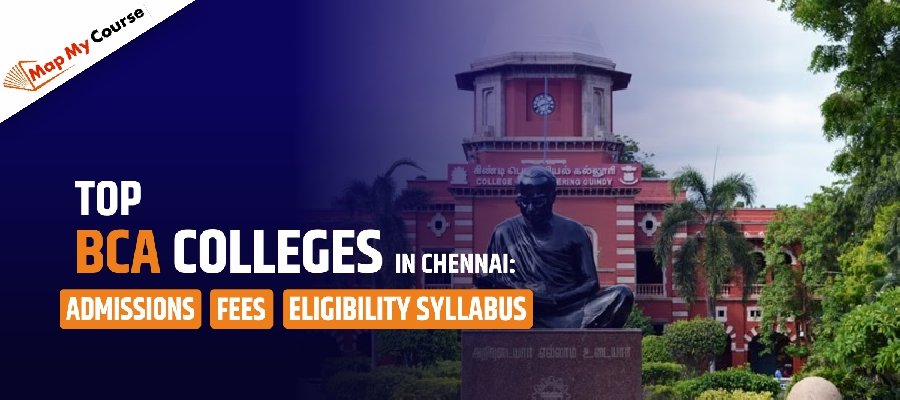For students planning to pursue a career in academics or research, the UGC NET and CSIR NET exams are two prominent options in India. These national-level exams are the stepping stones for roles like Assistant Professor and JRF.
However, understanding the difference between CSIR NET and UGC NET is important because they cater to different academic streams and have different purposes. In this blog, we will do a comparison between these two exams.
What Is The Full Form Of CSIR NET And UGC NET
CSIR NET
UGC NET
The UGC NET, or University Grants Commission National Eligibility Test, is an exam conducted by the National Testing Agency (NTA) on behalf of UGC to determine the eligibility of candidates for Junior Research Fellowship (JRF) and Assistant Professor roles in Indian universities and colleges. Unlike CSIR NET, UGC NET covers a wide variety of subjects, in the field of arts, humanities, social sciences, and commerce fields.
Do You Know the Full Form of PHD
What is CSIR NET?
The Council of Scientific and Industrial Research National Eligibility Test. Unlike UGC NET, which covers a wide range of subjects, CSIR NET is all about science and technology.
What Is UGC NET?
The UGC NET (University Grants Commission National Eligibility Test) is a national-level exam conducted by the National Testing Agency (NTA). The exam is popular among students who want to become Junior Research Fellows (JRF) or Assistant Professors at universities and colleges in India to teach subjects in arts, humanities, social sciences and commerce.
The key feature of UGC NET is its broad scope, offering opportunities for students from diverse academic backgrounds to build careers in academics.
What Is JRF?
JRF stands for Junior Research Fellowship; is offered to those who have performed in the CSIR NET or UGC NET exam. Those who cleared the cutoff for JRF are eligible to get this scholarship after being admitted to PhD in any central university in India.
CSIR NET vs UGC NET : Highlights
Category | CSIR NET | UGC NET |
Focus Area | Science and Technology (e.g., Life Sciences, Chemical Sciences) | Humanities, Social Sciences, Commerce, and other non-science fields |
Conducting Body | CSIR and NTA | UGC and NTA |
Subjects Covered | Life Sciences, Chemical Sciences, Physical Sciences, Earth Sciences, Mathematical Sciences | Humanities, Social Sciences, Commerce, Management, and Languages |
Eligibility | Requires M.Sc. or equivalent degree in science subjects | Requires a Master’s degree in non-science subjects (e.g., Arts, Commerce) |
Age Limit | 28 years (relaxation for reserved categories up to 5 years) | 30 years (relaxation for reserved categories up to 5 years) |
Research Focus | Scientific research and innovation in labs and universities | Research in humanities, social sciences, and arts-related disciplines |
Institutions for Research | IITs, IISERs, NITs, CSIR labs, ISRO, DRDO | Universities, colleges, research centers across India |
Global Opportunities | Often leads to international research roles in science and technology | Opportunities in global think tanks, cultural institutions, and academic collaborations |
CSIR NET vs UGC NET: Eligibility Criteria
Eligibility Criteria for CSIR NET
- Candidates must have qualified M.Sc. from any recognised university in India.
- Candidates must have scored minimum 55% in their degree.
- There is no age limit to appear in CSIR NET, however, to get candidate should be 28 years or less (relaxation for reserved candidates).
Eligibility Criteria for UGC NET
- Candidates must have qualified Masters (except M.Sc.) from any recognised university in India.
- Candidates must have scored minimum 55% in their degree.
- There is no age limit to appear in UGC NET, however, to get JRF candidate should be 30 years or less (relaxation for reserved candidates and females).
CSIR NET vs UGC NET: Exam Pattern
Exam Pattern For CSIR NET
Particular | Details | |
Mode of Exam | Online Computer-Based Test | |
No. of Questions | 75-150 (Varies subject to subject) | |
Parts | Part A | General Aptitude |
Part B | Subject Specific | |
Part C | Higher Order Questions | |
Time Allotted | 3 Hours | |
Marking Scheme | Varies according to Part | |
Varies according to Part | ||
Language | English and Hindi | |
Exam Pattern For UGC NET
Particular | Details | |
Mode of Exam | Online Computer-Based Test | |
No. of Questions | Paper 1 (General Paper) | 50 |
Paper 2 (Subject Specific Paper) | 100 | |
Time Allotted | 3 Hours | |
Marking Scheme | 2 Marks for every correct answer | |
No Negative Marking | ||
Language | English and Hindi | |
CSIR NET vs UGC NET: Career Opportunities
Career Opportunities After CSIR NET
Career Path | Description |
Assistant Professor |
|
Research Scientist Roles | Organizations like ISRO, DRDO, BARC, and other government R&D labs actively recruit CSIR NET-qualified candidates. |
Private Sector R&D | Pharma, biotech, and tech companies often prefer candidates with a strong research background for roles like R&D scientists or analysts. |
Career Opportunities After UGC NET
Career Path | Description |
Assistant Professor |
|
Public Sector Jobs | Many government organizations (like PSUs) consider UGC NET scores for recruitment in management trainee or administrative roles. |
Content Development and Academic Roles | Opportunities exist in publishing houses, online education platforms, and curriculum design roles. |
Key Differences between CSIR NET and UGC NET
Aspect | CSIR NET | UGC NET |
Field of Study | Focuses on science and technology subjects. | Focuses on arts, humanities, social sciences, and management. |
Subjects Covered | Includes Life Sciences, Chemical Sciences, Physical Sciences, Mathematical Sciences, and Earth Sciences. | Covers over 80 subjects, such as English, Political Science, Economics, Commerce, Sociology, and Management. |
Eligibility Criteria | Must have an M.Sc. or equivalent in a scientific field. | Must have a Master’s degree in arts, humanities, or social sciences. |
Exam Pattern | Divided into three parts: Part A (General Aptitude), Part B (Subject-specific), and Part C (Advanced subject knowledge). | Divided into two papers: Paper 1 (General Teaching and Research Aptitude) and Paper 2 (Subject-specific questions). |
Purpose | To qualify candidates for research fellowships and teaching in scientific fields. | To qualify candidates for teaching in universities and research in arts and social sciences. |
Age Limit | For JRF: 28 years (with relaxation); No age limit for Assistant Professor. | For JRF: 30 years (with relaxation); No age limit for Assistant Professor. |
Career Opportunities | Research labs, universities, scientific institutions, and industry R&D roles. | Assistant Professor roles, research positions, and policy-related jobs in arts and humanities fields. |
Conclusion
Now you know about CSIR NET and UGC NET , both are national-level exams conducted specifically for the PhD admissions and eligibility of assistant professor in India. However, this is not a degree, but the scorecard is still valuable, because it is often required in many PSUs and R&D institutions. All the government sectors value the scorecard.
FAQs
Q.1 What is the main difference between CSIR NET and UGC NET?
Ans. CSIR NET JRF is conducted for science streams, while UGC NET is conducted for arts, humanities, social sciences, and commerce.
Q.2 Which exam is tougher, CSIR NET or UGC NET?
Ans. Both exams have their own level of difficulty, but CSIR NET is generally considered tougher due to its focus on scientific research.
Q.3 Can I apply for both CSIR NET and UGC NET?
Ans. Yes, candidates can apply for both exams, but they need to meet the eligibility criteria for each exam.
Q.4 How many times can I attempt CSIR NET and UGC NET?
Ans. There is no limit on the number of attempts for CSIR NET, but UGC NET has an age limit.



